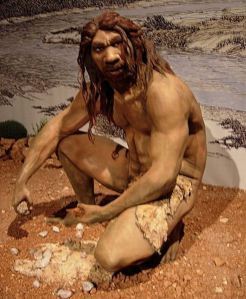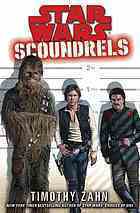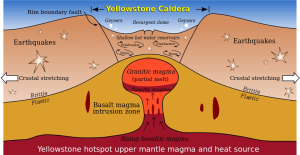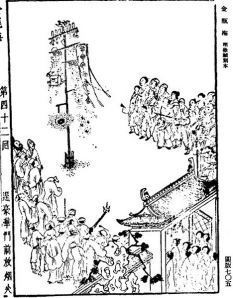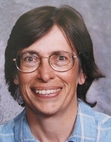Kate Rauner's Blog, page 101
January 29, 2014
Most Domesticated Animal – a Poem by Kate Rauner
Wild Human
A dozen dozen mammals
Of the largest size,
Yet only fifteen or so
Are now civilized.
Domesticated animals
Adapt to human life.
They eat whatever we have left,
They’re calm with little strife.
They’re smaller than their wild kin,
They breed in quarters tight,
In a social hierarch
They live without much fight.
With floppy ears and curly tails
Retaining juvie traits,
With spotted coats and weaker jaws
They’re joined to mankind’s fate.
It’s not clear how this happened,
Not clear it was our plan,
Cause farmers grew much smaller
Than Cro-Magnon man.
If we compare ourselves today
To Neanderthal,
We find our muscles weaker
To clamp our smaller jaws.
We tolerate the crowding,
Grow peaceful over time.
We lost protruding muzzles,
Lost the fangs canine.
Can’t judge the curly tail,
Can’t claim a piebald pelt.
But humans are domestic
The fate that we’ve been dealt.








January 26, 2014
We’re Dying from Cancers – Why That’s a Good Thing
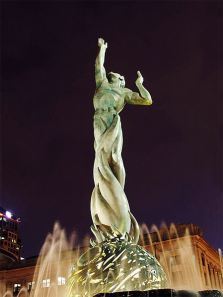
Fountain of Eternal Life, Cleveland, Ohio
Everyone is going to die. That’s not the “good thing”, just inevitable. Medicine and public health efforts have defeated many common causes of death, at least in wealthier countries. We don’t die from the traditional “childhood diseases” like measles. Smallpox is gone and India is about to be declared free of polio. Less and less is the flu, bubonic plague, even AIDS a massive killer. With reduced cigarette smoking, life expectancy has gone up. Hearts can be repaired and we see deaths from heart disease decline. Overweight contributes to heart disease and is still fairly intractable, but I hope we’ll make progress there, too. Why is cancer still our bane?
Cancer is a large category of diseases. Some are easier to attack than others. Recent discoveries reveal that one cancer in five seems to be caused by bacteria or viruses. As the vaccine against human papilloma virus shows, we are defeating these cancers. Some cancers are caused by synthetic chemicals. While this source is surprisingly small, better understanding and regulation will reduce it as a cause. There is encouraging progress fighting childhood and early-stage cancers. They can often be held off indefinitely.
But cancer is the flip-side of being alive. As pointed out by George Johnson at http://nyti.ms/1kv90ty, “for most cancers the only identifiable cause is entropy, the random genetic mutations that are an inevitable part of multicellular life.” In other words, aging. He offers the arresting image of each of us as a colony of symbiotic cells, each type too specialized today to live independently, but each still retaining the ability to evolve. When a group of cells starts to out-compete the rest of its body’s ecosystem, it’s a cancer.
So if you live long enough and outwit the other causes of death, cancer is what will get you in the end. But not for a very long time. That’s why it’s a good thing.








January 22, 2014
Tool Makers – a Poem by Kate Rauner
The alligator swims here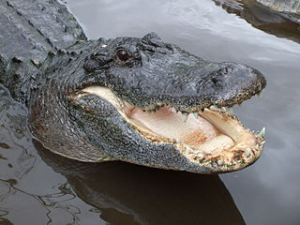
Hidden in the murk.
This is where the gators,
Beneath the river lurk.
She swims up under floating twigs,
Collects them on her snout
In sizes best for making nests,
Or perching if in doubt.
She gapes her jaws wide open,
Muddy water on her tongue.
When comes a little birdie near,
She grabs it in a lunge.
Man’s the mighty hunter,
Over Earth we rule.
Yet even flat-skulled gators
Hunt for birds with tools.








January 18, 2014
Alligators Use Tools

Alligator – looking for some sticks maybe?
“It’s the first time the use of a tool has been documented in reptiles, according to the study published in the current edition of Ethology, Ecology and Evolution.” cnn.com It seems the gators gather sticks on their snouts, then lie quietly in the water waiting for a hapless bird to try to perch. Lunging suddenly, the gator grabs the bird. They use the stick ploy more often during nesting season when birds are collecting sticks for nest-building.
Once, we humans tried to define ourselves as the animals that use tools. Then we discovered chimpanzees use 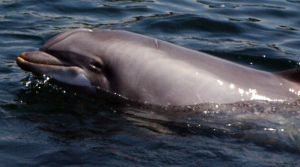 tools, then that birds use tools. Now alligators. If we insist that being human is not a matter of degree, but requires a unique capability, perhaps we can say humans are the animals that compose poetry. That may work, at least until we understand porpoises.
tools, then that birds use tools. Now alligators. If we insist that being human is not a matter of degree, but requires a unique capability, perhaps we can say humans are the animals that compose poetry. That may work, at least until we understand porpoises.








January 15, 2014
Constant – a poem by Kate Rauner
Constant

Measuring the speed of light
The speed of light is universal,
A physics constant we’ve all heard of.
It does not matter where you stand.
But are there ‘buts’ and are there ‘ands’?
Light is slowed when it goes thru
Air or glass or water too.
Can its speed ever be
Faster yet than what we see?
The rate of change within a frame
May exceed: that’s not the same
Tho our semantics it may vex
It’s not the speed of an object
“c” – the massless speed that’s fastest,
A description that has lasted.
Fete the knowledge it affords,
Or feel sorry for… the good Lord.








January 13, 2014
Venture – working on my next novel
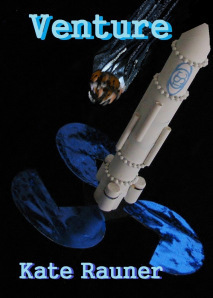 I am working my next book, due out in 2014. It will be a science fiction novel set on a space station, not very far in the future:
I am working my next book, due out in 2014. It will be a science fiction novel set on a space station, not very far in the future:
An international crew is flying the first commercial space station, nick-named Izzie, to the edge of the inner solar system. Their mission is to position Izzie at an enigmatic discovery: a portal to another star system. Along the way they plan to mine a comet and deliver supplies to the colony on Mars. But things don’t go as planned and the crew must come together as a team to save their mission and their lives.
I’ve posted my draft book cover and the book’s working title on this page. I’d love to know what you think of them. Please comment.
Take a look at the draft prologue here.

Working title and draft e-book cover
Prolog Venture
The meeting was corporate theater, designed to kick-off the most ambitious space venture since the New Economy had emerged. The Director was itching to announce a contract, signed earlier in the day, for a major mining mission. Happily for the young company, this meant the venture could break even. Success depended on pulling off an early launch, and he had already started the wheels turning to accelerate the schedule.
“Good morning, Director.” A slender man in a crisp, collarless jacket spoke as he pushed a coffee cart into the conference room.
“Why so formal, Jared?” The Director was standing in front of a blank wall at the front of the room, notes for the upcoming meeting in one hand.
“It seems appropriate,” Jared answered. “This is the first briefing for the first crew of our first commercial space station. It’s a big day for the Institute.” He took a small electronic pad from his pocket and aimed it at the projector in the ceiling.
“I assume you’ll want fully holographic videos?”
“Yes, thank you Jared.”
Jared set the projector controls. He checked the aim of the cameras, ensuring one captured the entire front wall and others were aimed where the crew would be seated. The meeting would be streamed live so he couldn’t rely on editing later.
As the crew began filing into the room Jared flipped on the cameras and settled in a chair against the back wall.
The mission pilot swaggered in first, pausing at the coffee cart to look around for the cameras. The newly appointed mission commander came next, stepping around the pilot with a frown before he walked to the front of the room and shook the Director’s hand. The five mission specialists followed. They took seats around the shiny black conference table.
Harry was the last specialist to enter. Avoiding the small talk around him, he gazed at the model of their space craft occupying most of the table. It was a gleaming white tube with photon collectors fanned out around one end.
Their mission was to fly the station to its permanent position in space. As measured by interplanetary distances, it would be centrally located: close to Mars and the main-belt asteroids, and at the opening of the anomalous glitch in space. There, in defiance of knows physics, the Helios star system touched our own solar system.
For four years Harry could leave the sorrows of Earth behind. While his crew mates went about their duties, he would spend his days tending the station’s food garden and running botanical experiments. Robots would be his helpers.
“Welcome!” The Director’s booming voice roused Harry from his thoughts. The Director stood at the front of the room, facing the crew, wearing a hearty smile. “While all thirty-six of our candidates are fully qualified and any of them would have been an excellent choice for this mission, you have been selected by our fan base to fly the company’s first Inner Solar System Commercial Station to its permanent position and deploy our clients’ projects. Congratulations to you all!”
It had been a long year for the pilot and mission specialists. Six teams of candidates, like a sports league, had competed for fans and logged points against each other in everything from celestial mechanics to tee-shirt design. Fans had voted one member of each team onto the crew. The results had just been announced yesterday. After months as competitors, now they were one crew under a mission commander chosen by the Institute.
The Director noted puzzled glances towards the eighth person seated with the crew. They would soon know why a mining engineer had been added.
“As you know from history, our world’s early burst of planetary exploration was interrupted by a global retrenchment. How lucky we are to be alive today! Populations have stabilized, the New Economy is prospering, and the space industry is about to boom.”
Jared tapped his pad and the front wall lit up with the logo for the Institute for Space Commerce International, Incorporated: ISC in large letters floated in front of concentric circles suggesting planetary orbits.
“You will position the station at the edge of the most intriguing discovery of the first space age, a point in the orbit of Mars where our solar system touches the star system of Helios. You may have seen the vid of the discovery, but let’s look at it again.”
The crew put pleasant expressions of interest on their faces, knowing at least one camera would be focused on them.
A glitch in space, where two star systems touched, was no better understood today than when it was first discovered. By now, however, everyone was used to the idea. It no longer inspired the same sense of bewilderment it once had.
Jared had brought up a holograph of the Helios system, first imaged years ago by a clunky satellite.
A striped beige disk sat close to the orange-yellow star. The view swung to the left to show a planet following the satellite in orbit. Only partially illuminated from this angle, it hung like a blue egg in black space.
The view swung farther left and zoomed in on a distant phenomenon. Following the blue planet in its orbit were three tiny points of light rotating around an invisible common center. The now-famous signal played: Thump, thump, thump; pause. Over and over every half hour, Thumper’s signal had never varied as long as the satellite’s telemetry had been relayed to Earth. But something had gone wrong and the relay satellite was lost. Earth had received no data from the Helios system for decades.
“Positioning the ISS commercial station at the edge of the anomaly will allow our clients to explore the many mysteries of Helios. One of our clients may be the first to confirm the extraterrestrial signal originates from intelligent life! We still have slots for a few more experiments available on the ISS.” That last bit was aimed at potential clients.
The crew’s doctor whispered to the lab specialist next to her. “I-S-S. Rather an awkward name, isn’t it?”
“I understand the initials have historical significance,” he whispered back.
“Happily, positioning our station at the anomaly will put us in orbit around the Sun on the doorstep of the Mars colony and at the edge of the main asteroid belt.”
“I have saved the best for last.” The Director paused for effect. “We have added a surprise to your mission.”
The crew awoke behind their polite expressions. Jared brought up another holograph.
“This is Comet Hobbs,” the Director said. “It was spotted about a year ago. By good luck, after perihelion, it will head back out into space on nearly the same trajectory planned for your journey. By advancing the ISS schedule a mere three months, we will be positioned to mine a comet for the first time in history. The client has provided a mining engineer to accompany the project.” The Director beamed his delight at the eighth member of the crew.
Thanks for looking at the draft prolog to my next novel. Please let me know what you think of the prolog and the draft book cover posted above. Thanks. Kate








January 11, 2014
Star Wars as Mission Impossible
This book is one of Zahn’s Star Wars novels. It takes place between Star Wars IV: A New Hope and V: The Empire Strikes Back, when Han Solo and Chewbacca have returned to their smuggling career. Although Zahn uses the characters’ names and makes occasional references to Star Wars, the references strikes me as gratuitous. They could be written out without any effect on the story.
This is a Mission Impossible or Ocean’s Eleven story, set on a “galactic empire” type world. Han is hired to steal back some money that was stolen from his client. He assembles a team of thieves for the project, and discovers his target is an organized crime lord who also holds blackmail records that may be even more valuable. Zahn sets up a complex set of obstacles for Han to overcome and delivers an equally complex set of solutions. The characters occasionally stop and explain the convoluted relationships within the crime and why their actions are clever. Zahn does not let us readers in on some things Han knows, which is a technique that happens to irritate me. At times, it all seemed too cute, but the action moves right along. The epilog offers some of those missing ties back to Star Wars and sets up for the next novel. My e-copy also included 190 pages of excerpts from other Star Wars novels.
For those who enjoy the Mission Impossible sort of story, and as long as you’re not expecting a continuation of the Star Wars story line, this is a good book.








January 8, 2014
Because They’re Big – a Poem by Kate Rauner
Because They’re Big
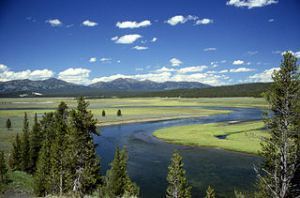
Yellowstone caldera today, Hayden Valley
Where river Drac joins the Isère,
A synchrotron ring is there,
A stadium sized machine
That generates an x-ray beam.
Beams fly off to tests beginning,
Like water flung from wheels spinning.
Hellish pressure and furnace heat
Are conjured in a palm-sized feat.
Knowledge that we now acquire
Of volcano threats most dire.
Super-volcanoes will erupt
As soon as they grow big enough.
Sheer volume of their liquid magma
For eruptions yielding global drama.
Once every hundred thousand years
Mankind must face colossal fears.
The clock is ticking, that we know,
Half-way till Yellowstone will blow.
Can North America calmly bide
When there are twenty more worldwide?
Thanks to Wim Malfait et al and the European Synchrotron Radiation Facility in Grenoble, France for these results. http://bbc.in/Ks5Q9H








January 4, 2014
Fossil Water
 Scientists have discovered large aquifers in the continental shelves off Australia, China, North American and South Africa. This article http://bit.ly/199xnpY calls them “low salinity” and the headline says “fresh water”. (You have to be careful of headlines, but let’s accept it at face value for the moment).
Scientists have discovered large aquifers in the continental shelves off Australia, China, North American and South Africa. This article http://bit.ly/199xnpY calls them “low salinity” and the headline says “fresh water”. (You have to be careful of headlines, but let’s accept it at face value for the moment).
This is great news. It is thought that the fresh water accumulated when sea levels were much lower and was protected from the rising sea water by impermeable layers of clay. Perhaps thirsty countries can access the water with horizontal drilling from the coast. Such wells wouldn’t be cheap, but this discovery may mitigate a looming world water shortage. That would give humanity time for a longer-term solution, such as naturally falling populations or improved desalinization and recycling technologies.
It’s nice to get hopeful news from time to time.
The study was published in the journal Nature.








January 1, 2014
Happy New Year
A New Year – a poem by Kate Rauner
Fireworks in China
What is
A New Year for?
Leap more.
Laugh more.
Love more.
Listen more.
Learn more.
Live more.









